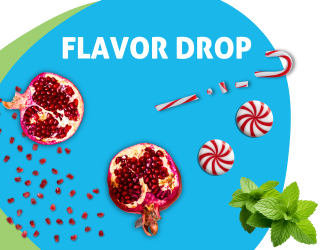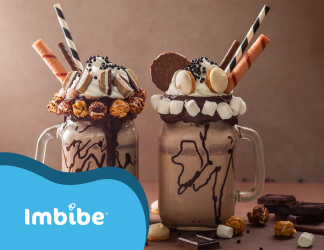Botanical flavors are popping up in products from coffee to Slurpees. Driving the trend is consumer demand for healthy, natural and functional ingredients as well as receptiveness to sophisticated flavor profiles. According to Innova Market Insights, the number of global food and beverage products with botanical flavors increased 8% annually from 2014 to 2018.
Floral flavors have been especially popular the last few years. Innova Market Insights found that the number of product launches with floral flavors doubled from 2016 to 2018 and Technavio predicts they will grow at a CAGR of 10% through 2022. Some of the most commonly used floral flavors include hibiscus, lavender, elderflower, and rose. These flavors are incorporated into products across categories but are especially prevalent in cocktails as of late. Mintel reveals that the use of floral flavors increased 65% on cocktail menus from 2015 to 2018 and they are also common in high-end mocktails.
Hibiscus is one of the fastest growing floral flavors. In addition to imparting a tart, cranberry-like flavor, it’s loaded with antioxidants and has a bright pink-red color that enhances the visual appeal of beverages. Mintel reports hibiscus experienced 300% growth in food and beverage product launches since 2012 and 55% growth on menus from 2015 to 2018. The rising star of floral flavors is lavender, which experienced 31% average annual growth in food and beverage product launches from 2013 to 2017 according to Innova Market Insights. Lavender is known for being soothing, so it is often incorporated into products that promote relaxation, but it’s also been used as a flavor in beverages like lattes, soda and enhanced waters.
Herbs and spices are also experiencing strong growth. Culinary herbs like mint and basil are often combined with true-to-fruit flavors like strawberry, watermelon and lime. Mintel claims that use of mint in non-alcoholic beverages grew 48% from 2015 to 2017. Globally inspired spices like ginger, turmeric and cardamom are also en vogue because they are functional and flavorful. Turmeric is known for its anti-inflammatory properties and bright yellow color. Sales of products with turmeric have grown 179% in the last three years, according to Nielsen. Ginger is a very versatile ingredient widely used in beverages and in foodservice – Datassential reports that the spicy root is on 55% of restaurant menus across the nation. In addition to adding spice, ginger can alleviate an upset stomach and help ward off germs. Antioxidant-rich cardamom is an up-and-coming spice that has been incorporated into products like lattes, ice cream and flavored almonds in the last year.
Here are some market examples of how these booming botanicals are being incorporated into products:
Floral Flavors |
||||
Hibiscus |
||||
 |
 |
 |
 |
|
Lavender |
||||
 |
 |
 |
 |
|
Elderflower |
||||
 |
 |
 |
 |
|
Rose |
||||
 |
 |
 |
 |
|
Herbs & Spices |
||||
Mint |
||||
 |
 |
 |
 |
|
Basil |
||||
 |
 |
 |
 |
|
Ginger |
||||
 |
 |
 |
 |
|
Turmeric |
||||
 |
 |
 |
 |
|
Cardamom |
||||
 |
 |
 |
 |
|



